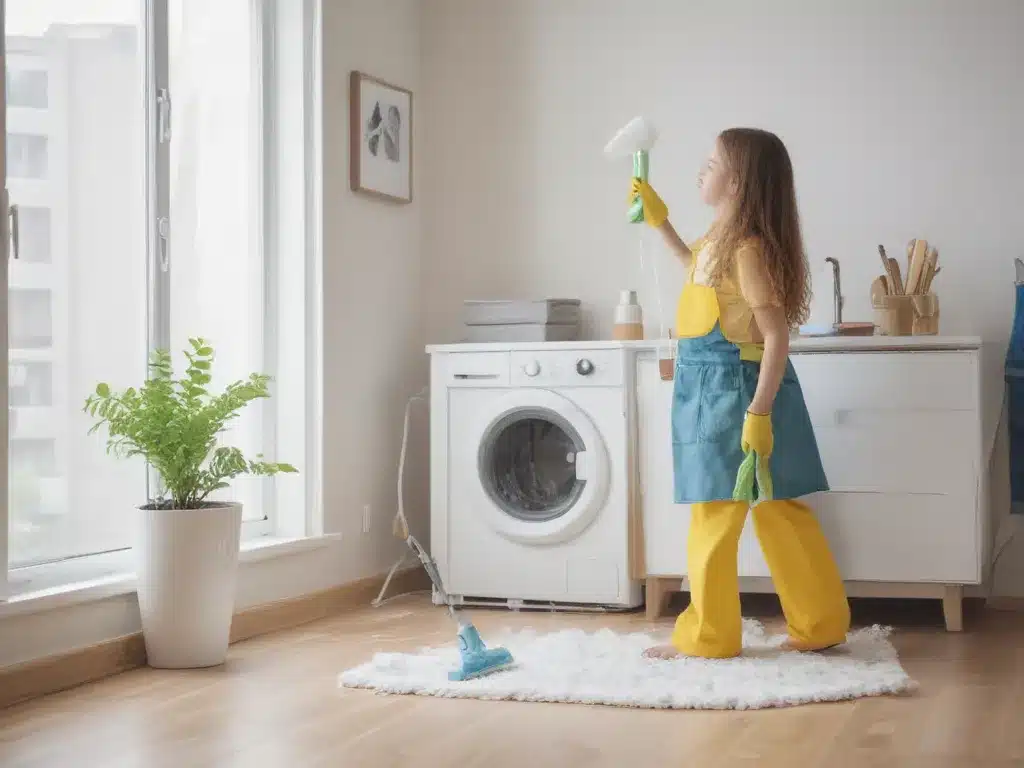Introduction
Do you ever find yourself struggling to maintain a clean and fresh-smelling home? Are you tired of constantly battling dust, dirt, and unwanted odors? If so, you’re not alone. Many homeowners face the challenge of keeping their living spaces in pristine condition while also ensuring healthy indoor air quality. In this comprehensive guide, I will share invaluable insights and practical tips to help you achieve a truly clean home with fresh, breathable air.
The Importance of a Clean Home
A clean home – what does it mean for a home to be clean? A clean home is a space where surfaces are free from dirt, dust, and grime. It is a sanctuary where every corner sparkles and radiates a sense of cleanliness and order. However, true cleanliness goes beyond just appearances. A clean home is also a healthier home, as it minimizes the potential for the accumulation of harmful allergens, bacteria, and contaminants.
The benefits of maintaining a clean home are numerous. A clean environment can:
- Reduce the risk of respiratory issues and allergies
- Promote better mental well-being and relaxation
- Enhance the overall aesthetic appeal of your living space
- Prolong the lifespan of your belongings and furniture
- Create a welcoming and inviting atmosphere for guests
By prioritizing cleanliness, you not only create a visually appealing environment but also contribute to the overall health and happiness of yourself and your loved ones.
The Importance of Fresh Air
While cleanliness is crucial, it is equally important to ensure that the air within your home is fresh and free from pollutants. Poor indoor air quality can have detrimental effects on your health and well-being. Common indoor air pollutants include:
- Volatile Organic Compounds (VOCs) from cleaning products, paints, and furnishings
- Mold and mildew due to excess moisture
- Allergens from pet dander, dust mites, and pollen
- Carbon monoxide and other combustion byproducts
Exposure to these pollutants can lead to a range of health issues, including respiratory problems, headaches, fatigue, and even long-term effects like cancer. By maintaining fresh air circulation and minimizing indoor air pollutants, you can create a healthier and more comfortable living environment.
Cleaning Strategies for a Truly Clean Home
To achieve a truly clean home, it is essential to adopt a comprehensive cleaning strategy that addresses every nook and cranny. Here are some effective cleaning strategies to consider:
Develop a Cleaning Schedule
Creating a cleaning schedule – a plan that outlines when and how often certain tasks should be performed – can help ensure that no area of your home is neglected. Divide your cleaning tasks into daily, weekly, and monthly routines to maintain a consistent level of cleanliness.
Deep Clean Regularly
While regular surface cleaning is important, it is equally crucial to perform deep cleaning sessions periodically. Deep cleaning involves tackling those hard-to-reach areas, such as behind appliances, inside cabinets, and under furniture. This process helps eliminate built-up grime and prevents the accumulation of allergens and contaminants.
Declutter and Organize
Clutter not only creates a visually unappealing environment but also provides hiding spots for dust and dirt. By decluttering and organizing your living spaces, you eliminate potential breeding grounds for bacteria and allergens, making it easier to maintain a truly clean home.
Use Proper Cleaning Tools and Products
Investing in high-quality cleaning tools and products can make a significant difference in the effectiveness of your cleaning efforts. Opt for microfiber cloths, sturdy vacuums with HEPA filters, and eco-friendly cleaning solutions that are safe for both your family and the environment.
Strategies for Maintaining Fresh Indoor Air
Maintaining fresh indoor air is just as important as keeping your home clean. Here are some strategies to consider:
Improve Ventilation
Proper ventilation is key to ensuring fresh air circulation within your home. Open windows regularly to allow for natural airflow, and consider installing exhaust fans in high-moisture areas like bathrooms and kitchens. Additionally, invest in air purifiers or indoor plants, which can help remove pollutants and improve air quality.
Control Humidity Levels
Excessive moisture in your home can lead to the growth of mold and mildew, which can negatively impact indoor air quality. Use dehumidifiers or air conditioning units to maintain optimal humidity levels, and promptly address any water leaks or moisture issues.
Use Natural Air Fresheners
While chemical-based air fresheners may mask odors temporarily, they can also introduce harmful VOCs into your living space. Instead, opt for natural air fresheners like essential oils, baking soda, or houseplants, which can effectively purify the air and leave a pleasant, natural scent.
Regularly Clean and Maintain HVAC Systems
Your heating, ventilation, and air conditioning (HVAC) system plays a crucial role in circulating air throughout your home. Regularly cleaning and maintaining your HVAC system, including replacing air filters, can help ensure that it operates efficiently and doesn’t contribute to indoor air pollution.
Conclusion
Achieving a truly clean home with fresh air is not just about aesthetics; it’s about creating a healthy and comfortable living environment for you and your loved ones. By adopting the cleaning strategies and air quality maintenance techniques outlined in this guide, you can transform your living space into a pristine sanctuary that promotes well-being and peace of mind.
Remember, maintaining a clean home and fresh air is an ongoing process that requires dedication and consistency. Incorporate these practices into your daily routine, and you’ll soon experience the numerous benefits of a truly clean and breathable home.







